Common Causes of Sediment in Building Water Systems
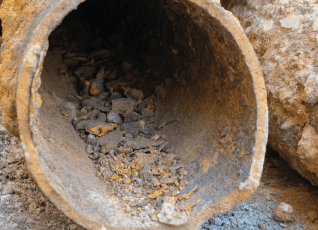
Sediment is a collection of foreign materials introduced into building water systems from several sources. Some of these sources are naturally occurring, such as soil runoff. Other sources are infrastructure-related, most often from pipe and equipment corrosion. Sediment in your building’s water system can cause several issues. It can damage piping and equipment, decrease the efficacy of secondary disinfection, create additional corrosion particulate, and encourage bacterial growth. Read on to learn the common causes of sediment in water systems and how to treat it. Sediment from the incoming water supply Most municipalities and water treatment facilities filter the water before delivering it to consumers, but it’s impossible to remove all sediment. Decades of sediment deposits on the interior of pipes can be disturbed by hydrant flushing, water main breaks, and other disruptive events. As water travels to your facility, it can pick up this loose sediment as well as corrosion particulate from old and corroded pipes outside your facility. The best way to keep sediment out of your building is to install a sediment filtration system at your point of entry. This system will catch particles like a net before they can enter and cause issues. Corroded pipes and equipment Sediment in plumbing can cause pipes and water-bearing equipment to corrode prematurely. The same happens with oxidant disinfectants. Have an expert perform water quality tests to identify the cause of the corrosion. They’ll determine if you have sediment in your water system contributing to the corrosion and where the sediment is coming from. They can also check for signs of corrosive contaminants. Non-oxidant disinfection technologies can help prevent future corrosion. Old pipes and equipment Water quality problems are more common with old pipes, and they’re more susceptible to damage from sediment. Keep a record of how old your equipment is to determine if you need to replace it. Sediment may also be a sign that you need to call a certified plumber for help. They can help you assess the extent of the damage and what pipes and equipment need to be replaced. Worn-out rubber parts and old equipment Take out a bit of the sediment in your water. If it feels rubbery, it could be particles from a rubber piece of your plumbing that’s degrading. These include: You can try inspecting them to find out which ones were affected. You may need to replace them if they’ve been damaged. The culprit could be oxidant-based disinfectants, so consider switching to a non-oxidant method. Construction and renovation Construction and renovation events can also impact the amount of sediment in your building water systems. Increases in sediment can occur from construction-related excavations and water main breaks. Pressure changes (turning on and off the pumps and valves) can disrupt accumulated sediment, like corrosion products and scale deposits, and release it throughout the building water system. Building and water system shutdowns can lead to stagnation, allowing sediment to accumulate during the shutdown. These disruptions can all lead to a high sediment load throughout the building, impacting equipment, disinfection, and bacterial growth. Where to get help removing sediment from water Sediment naturally enters a building’s water, but old equipment and some disinfection methods can increase it. Sediment can damage your equipment and increase your bacterial risk. Before choosing a sediment removal method, be sure to thoroughly evaluate the options available to you. Not all solutions are right for your facility’s unique infrastructure and may inadvertently cause other issues, like increased bacterial activity. If you’re unsure what’s best, LiquiTech can help. Contact us for your sediment filtration needs today.
News Release: New Study Shows Copper-Silver Ionization is Effective for Legionella Control
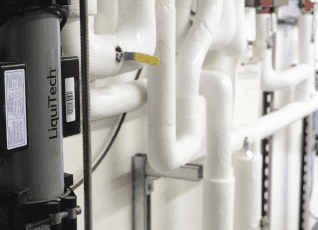
Legionnaires’ disease cases have increased nearly tenfold in recent decades, leading to thousands of hospitalizations and deaths. Outbreaks are linked to Legionella, a bacteria found in potable water systems in large facilities like hospitals, multi-family buildings, resorts, and office buildings. A recently published study shows that copper-silver ionization effectively controls Legionella in building water systems to prevent Legionnaires’ disease. A new study published in the American Water Works Association (AWWA) Water Science journal shows that copper-silver ionization effectively controls Legionella in building water systems. The study, conducted by Dr. Mark LeChevallier with technical and financial support from LiquiTech, examines more than 80 sources of research studies and related literature to analyze the efficacy of copper-silver ionization as a water treatment solution. Dr. LeChevallier concludes “that use of copper-silver ionization to control Legionella and other opportunistic pathogens is highly effective when the units are properly designed, maintained, and operated.” Legionnaires’ disease cases have increased nearly tenfold in recent decades, leading to thousands of hospitalizations. Those who catch Legionnaires’ disease experience a severe form of pneumonia caused by Legionella, a bacteria found in poorly maintained water systems. Studies show that Legionella is responsible for about two-thirds of all disease outbreaks from drinking water and the cause of all documented deaths attributed to drinking water-associated infections. Historically, outbreaks were linked to cooling tower systems. As our understanding of Legionella has advanced over recent decades, most outbreaks are now connected to potable water systems in large facilities, such as hospitals, long-term healthcare facilities, resorts, and office buildings. It’s estimated that 54% of all potable building water systems have some level of Legionella present. Plumbing codes and regulations have been developed to standardize the design, structure, and management of building water systems to prevent waterborne diseases. However, based on the studies cited in this article and elsewhere, there is a need for supplemental treatment of building water systems. One such supplemental treatment is copper-silver ionization, a chemical-free disinfection solution for potable water systems. It releases copper and silver ions into the building’s water system to destroy waterborne pathogens like Legionella. Copper-silver ionization is not a new water treatment option. Silver ionization was used in the 1960s by NASA for the sanitation of water on spacecraft. In the 1980s, copper-silver ionization was used in swimming pools as an alternative to chlorine. Later, in 1994, copper-silver ionization was the first reported effective treatment for controlling Legionella in a hospital. Today, copper-silver ionization is used to prevent waterborne pathogens in a variety of buildings with complex water systems. Although copper-silver ionization is a low-cost and chemical-free option for water disinfection, the system must be designed properly and used in the appropriate applications to achieve optimal results. Crucial to its effectiveness is identifying and responding to abnormalities in water usage patterns and chemistry. Dr. LeChevallier, a drinking water research scientist with a Ph.D. in Microbiology, examined literature and studies related to copper-silver ionization system design, maintenance, and operations, and the impact water chemistry has on its performance. In addition to authoring more than 300 research papers, Dr. LeChevallier is a member of the Drinking Water Subcommittee of the Science Advisory Board of the United States Environmental Protection Agency (US EPA), a past member of the Water Science Technology Board of the National Academies of Science, and the past Chair of the AWWA Water Science & Research Division. In his recently published study, Dr. LeChevallier explained, “These water quality and operational characteristics must be properly addressed to assure that the highest disinfection efficacy is obtained through copper-silver ionization.” He reviewed research and related literature to investigate the mechanisms of copper and silver disinfection. Copper-silver ionization works by treating water through electrolysis. An electric current is applied to a copper and silver bar to produce and release positively charged ions. These copper and silver ions then find microorganisms in the water with a negative charge, like Legionella. The copper ions bond to the negative walls of the microorganisms, disrupting cell wall permeability and the absorption of life-sustaining nutrients. This disruption to the cell wall allows the silver ions to enter and destroy the core of the bacteria, thus making it impossible to survive. Dr. LeChevallier cited studies showing that copper and silver can work as biocides independently or together. One study emphasized that combined treatment with copper and silver was associated with decreased incidence of Legionella and a faster reduction of bacteria than copper or silver alone. In addition to copper-silver ionization being considered an effective supplemental method for water treatment by researchers, the US EPA has recognized both copper and silver as metallic antimicrobial agents. Studies show that copper-silver ionization is effective against many waterborne pathogens, including Legionella, Nontuberculous Mycobacterium, Pseudomonas, Stenotrophomonas, Acinetobacter, and fungi. While the issue of copper-silver resistance was discussed in portions of the literature that Dr. LeChevallier reviewed, it’s important to note that there was no evidence of it occurring with Legionella. Copper-silver resistance, where pathogens can continue to grow and thrive even in the presence of copper and silver, was only observed with E. coli and Salmonella. During his investigation, Dr. LeChevallier found that the design, operation, and maintenance of copper-silver ionization systems are critical to their effective functionality. In his published paper, he explained that copper-silver ionization will act as a water disinfectant; however, the proper engineering and operation of the system are integral to its success. Essential components of the copper-silver ionization system include the electrodes, flow cells, power supply, control panel, flow meter, and web interface. Each component must be operated and maintained for copper-silver ionization to be most effective. “Buyers of [copper-silver ionization] systems should pay attention to the design and configuration of the electrodes – particularly as they wear. The construction of the flow cell and the adequacy of the power supply are important to deliver the necessary amperage to achieve the target copper and silver concentrations. Copper and silver doses should be flow paced and can be remotely monitored with a web-based interface,” said Dr. LeChevallier. Additionally, Dr. LeChevallier cautioned that water quality can impact copper-silver ionization as a water treatment. He explained that water chemistry, physiochemical, and environmental factors can influence the efficacy of copper-silver ionization if not considered and managed correctly. Specific factors to
Water Management Guidelines for Healthcare

According to the CDC, healthcare-associated infections impact 722,000 patients annually in the United States, costing healthcare facilities more than $28 billion. A study published in the National Library of Medicine found that 20% of healthcare-associated infections are caused by water. Taking a proactive approach to water management in your healthcare facility can help you protect patients, keep them healthy, and prevent unnecessary costs. A water management program will also ensure that your facility complies with regulatory agencies. Below we’ll explore the importance of water management programs and the regulations, standards, and guidelines your healthcare facility should know when developing and implementing one. The importance of a water management program Many waterborne pathogens can make people ill and cause infections. Legionella is chief among them, which is why healthcare facilities need a specific Legionella prevention plan, in addition to managing other waterborne pathogens. Some of the dangers of waterborne pathogens, especially to seniors and immunocompromised individuals, include: Building water systems can create perfect conditions for Legionella and other waterborne pathogens to multiply and cause disease. Some factors in building water systems that contribute to Legionella and pathogen growth include water stagnation, lack of disinfectant, water temperatures, and sediment. A well-developed and operated water management program will have controls to prevent Legionella and other waterborne pathogens in your building’s water system. This protects your patients and keeps your facility compliant with the various water management regulations, standards, and guidelines. Water management regulations, standards, and guidelines for healthcare The differences between regulations, standards, and guidelines are subtle, but it’s helpful to understand what they are. Regulations and standards for healthcare Regulations and standards are requirements healthcare facilities must follow. If a waterborne pathogen outbreak occurs at your facility, you can be held liable. Water management regulations and standards for healthcare include: Guidelines for healthcare Guidelines are industry best practices and are beneficial to follow. Water management guidelines for healthcare include: Implementing a water management program There are many regulations, standards, and guidelines that healthcare facilities should be familiar with when developing and implementing a water management program. Navigating and understanding all of them can be challenging. Partnering with an experienced water management company like LiquiTech can simplify the process of developing and implementing a compliant water management program. Learn more about LiquiTech’s water management programs.
Ten Causes of Legionella in a Building’s Water Supply
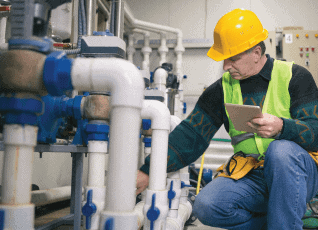
Water from municipal water systems is often contaminated with small amounts of bacteria, parasites, fungi, and other organisms that escape disinfection methods. The low amounts of these organisms generally do not cause disease but can pose a threat in complex or multi-story plumbing systems due to various factors. Here are the most common. Water temperature fluctuations Legionella survives in a wide range of water temperatures but grows rapidly at temperatures of 77°F-113°F. To keep water outside this ideal range, it’s essential to keep hot water hot and cold water cold. Factors that can lead to ideal Legionella temperatures include: Biofilm Biofilm is a slimy buildup in pipes made up of bacteria, fungi, sediments, and nutrient deposits. It can grow continuously on any surface exposed to moisture and is an ideal environment for organisms to grow, offering protection from disinfectant. Water stagnation Areas of plumbing systems with poor or no water flow can create areas of standing water. Biofilm grows, and water reaches ambient temperatures, creating an ideal environment for organisms to grow. Sediment Sediment is a collection of minerals and natural materials introduced into building water systems from the municipal water supply. It damages pipes and other water-using equipment, shields bacteria from supplemental disinfection, provides nutrients to organisms in the water and uses up disinfection unnecessarily. Scale When minerals from the water collect inside a water system, it forms a hard, rock-like buildup known as scale. Scale forms a barrier that interferes with heating and cooling the water, which can lead to unpredictable and/or unacceptable water temperatures. It also provides an ideal environment for Legionella and other waterborne pathogens to grow. Changes in water pressure If water pressure inside your building is affected for any reason, it may dislodge biofilm, releasing bacteria into the rest of the water system. Low levels of disinfectant Normal building processes like heating, storing, and filtering can reduce the amount of disinfectant in the water, allowing bacteria to grow. Construction Vibrations can dislodge biofilm and scale — and the bacteria living in it — into a building’s water supply. Water main breaks A water main break can cause a sudden change in water pressure, which can dislodge biofilm. In addition, a water main break often results in extra dirt or unwanted matter in the water. When these contaminants show up, they use the disinfectant supply and further compromise building water. Municipal water supply Changes in the municipal water supply can increase sediment and affect disinfectant levels, potentially leading to bacteria growth.
New Water Cleaning Technologies For Your Facility
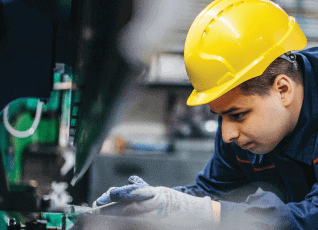
Providing clean water is one of the most basic responsibilities of any facility owner or operator, and it’s especially true in the case of healthcare facilities, hotels, or any other property where large groups of people gather. New water technologies are constantly emerging, and it behooves you to pay attention to them in case one of them may be a good fit for your properties. Keeping up with the latest water treatment technology is essential if you want to continue ensuring the safety of your building’s infrastructure. It is crucial for preventing waterborne diseases and maintaining the community’s trust. Here are a few examples of advanced water treatment technologies you may want to consider. Membrane filtration This water filtration technology utilizes a membrane through which water passes. Tiny pores in the membrane effectively sift certain materials and contaminants out of the water, separating it into two streams. There are two basic categories: low-pressure membranes, such as microfiltration, and high-pressure membranes, including reverse osmosis and nanofiltration. The former removes particulates effectively, while the latter is best for dissolved matter and microorganisms. UV disinfection Ultraviolet water disinfection uses UV light to kill bacteria and other microorganisms. Light in a specific wavelength damages the DNA of these organisms and prevents them from reproducing. This technique has been used in one form or another for decades. Although it is not one of the most recent drinking water treatment technologies, it still can serve an essential function as part of your facility’s strategy. Many property owners utilize it and other techniques to kill pathogens such as cryptosporidium, mycobacteria, and giardia. Copper-silver ionization This advanced water-cleaning technology has proven to be the most effective for killing Legionella and other waterborne pathogens. Copper-silver ionization is much safer than other methods because it does not use chemicals that could harm people. It works by injecting ions into the plumbing infrastructure, which travel throughout the system and attach themselves to microorganisms that may be living inside it. The electrostatic bonds they create on the cell walls interfere with the organisms’ ability to take in nutrients, effectively starving them to death. Among the many benefits of this method is that it carries no risk of corrosion to pipes. The copper-silver ions it creates cause no harm to plumbing infrastructure and are safe for human consumption. Because no caustic chemicals are used in the process, it is also environmentally safe. For these reasons and more, many facility owners consider copper-silver ionization to be the best solution to fighting waterborne pathogens. LiquiTech can help As a leader in water treatment, LiquiTech is your best choice when you want to take advantage of what these new water technologies offer. We work closely with you, helping you develop a comprehensive plan for protecting the water systems inside your facility. With our expertise and multiple solutions working for you, you can rest assured knowing your building’s potable water supply will be protected against pathogens and other contaminants that can lead to waterborne illnesses and damage to your infrastructure. If you want to learn more about our water treatment technologies and everything we can do for you, contact one of our representatives today.
ASSE Standard 12080: Best Practices for Water Safety and Water Management
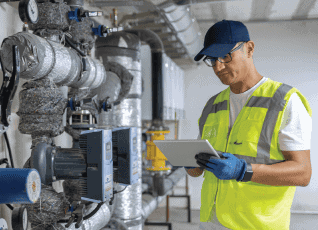
ASSE Standard 12080 is a comprehensive standard for Legionella water safety and water management program professionals. It sets a minimum criteria for individuals performing building water system risk assessments and developing water management programs. Who does ASSE Standard 12080 apply to? ASSE Standard 12080 applies to anyone involved in water management, including facility managers, healthcare engineers, infection preventionists, plumbers, risk managers, and water treatment personnel. It sets minimum criteria for their training and certification, ensuring that they are properly equipped to handle waterborne pathogens and manage water systems effectively. Risk assessment and management Routine Legionella testing, annual risk assessments for other waterborne pathogens, and the establishment of a cross-functional water management team are among the key requirements of ASSE Standard 12080. The standard emphasizes the need to continually identify and minimize risks, with routine meetings to review control limits and monitoring measures, ensure compliance with monitoring methods and frequencies, and implement timely corrective actions. Communication and training Open communication and comprehensive training are cornerstones of ASSE Standard 12080. The standard outlines the importance of training on water management programs and procedures, and the need to communicate potential issues with the team, such as low flow and discoloration. Additionally, it encourages training on risks associated with waterborne pathogens and the establishment of communication pathways for reporting out-of-range water test results. Clinical surveillance ASSE Standard 12080 provides guidance on clinical surveillance, involving immediate notification to infection prevention and clinicians of positive Legionella test results. The standard also covers aspects of urinary antigen testing and culture testing for Legionella. Construction, renovation, and risk management ASSE Standard 12080 emphasizes the importance of proper water management during construction and renovation projects. It advises on steps to be followed when opening or re-opening facilities, managing changes in populations, and understanding the risk level of occupants. The standard lays out a comprehensive strategy for managing construction risks, from understanding the water infrastructure design plans to reviewing post-construction commissioning. Design considerations Finally, ASSE Standard 12080 offers guidance on design considerations for water safety. These include plans for supplemental disinfection, fixture selection, and strategies to minimize stagnation, dead legs, and cross-connections. The standard also encourages involvement in the design phase to foresee and mitigate potential issues. ASSE Standard 12080 is a comprehensive standard that goes beyond just defining guidelines. It fosters a culture of safety, communication, and continuous education. Understanding and implementing ASSE Standard 12080 is important in ensuring optimal water quality and protecting building occupants and building water systems.
Types of Commercial Water Filters
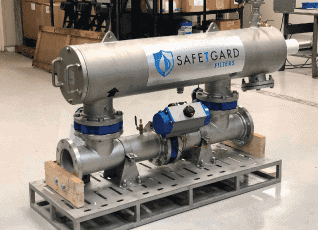
Protecting your commercial property from waterborne diseases means having a sound filtration system to keep your water clean. However, there are multiple commercial water filters, meaning you may need clarification about what you need. Read on to learn more about industrial water filters and which ones you should install around your facility. What is point-of-entry water treatment? These systems treat water at the point where it enters the building. This means they filter and clean water for the entire property before it flows into the plumbing. Depending on the situation, they may include water-softening capabilities to remove minerals. This equipment tends to be large and durable, lasting several years with proper maintenance and cleaning. What is point-of-use water treatment? Unlike point-of-entry systems, these types of commercial water filters are installed at specific locations to clean water as the water is being used. For example, a drinking fountain may have one of these filtration units to process water each time someone uses it. They may be used in conjunction with point-of-entry systems in large commercial spaces or on specific fixtures around a home. They usually require attention in the form of changing the filter regularly. Point-of-entry vs. point-of-use If you own a commercial building, chances are you will need one or both systems to ensure the cleanest, safest water possible for your tenants and guests. Breaking it down further, you would need point-of-entry filtration if: Your water source is a well and features foul-smelling water or water that contains too many minerals and/or sediment Your water supply is “hard” and requires softening You should consider point-of-use filters if: Your facility only needs to have clean drinking water, with other sources being used for non-potable applications You don’t have the resources to invest in a complete point-of-entry system and only need filtration for a few taps or fixtures LiquiTech offers multiple water management solutions no matter what your facility’s needs may be.
Is Copper-Silver Ionization the Best for Water Disinfection?
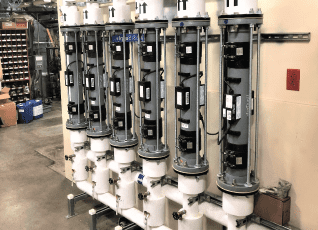
Safe, clean drinking water is more than essential — it’s imperative. Any building where people live, work, or play must keep water free from the host of waterborne pathogens that could be lurking within its plumbing. Bacteria, mold, viruses, and more living in the drinking water can expose people to a gallery of diseases and infections. At best, they could lead to outbreaks of gastrointestinal discomfort. At worst, they could be deadly. This makes potable water disinfection a high priority for property owners and managers of all types. Although chlorine has been a popular choice for this process in the past, it comes with several trade-offs: How does copper-silver ionization work? In the simplest terms, copper-silver ionization involves introducing electrically charged copper and silver ions into the water supply. These particles carry a positive charge, meaning they are attracted to and bond with any substance with a negative charge, such as bacteria, fungi, and viruses. Once the copper ions form an electrostatic bond with these pathogens, the silver ions penetrate the cell walls and permanently damage the cells’ DNA. This renders the contaminants dead while the ions remain to repeat the process. These ions are safe for human consumption and can continue to fight against infections as they travel through the plumbing system. This makes copper-silver ionization an excellent choice for disinfecting drinking water. This is why properties that serve large numbers of people — such as hospitals, hotels and resorts, and educational institutions — choose to install this technology. It has been proven effective for disinfecting from point-of-entry to point-of-use through the complete plumbing system keeping patients and patrons safe when interacting with water through showers, faucets, ice machines, and medical equipment. In addition, the process is harmless to pipes of all types, meaning it does not cause damage to plumbing systems and water-bearing equipment while maintaining a clean water source. LiquiTech is your partner for clean water Protecting the public from dangerous waterborne diseases should be at the top of your list if you own or manage a large facility in the healthcare or hospitality industries. As the leader in copper-silver ionization water treatment, LiquiTech understands how valuable this technology can be in killing Legionella and other pathogens. We can provide a comprehensive system and offer support in water testing, water management plans, remote monitoring, and more. If you want to learn more about how this process works and how we can help you take full advantage of it, get in touch with us today. Our experienced representatives are ready to answer any questions you may have.